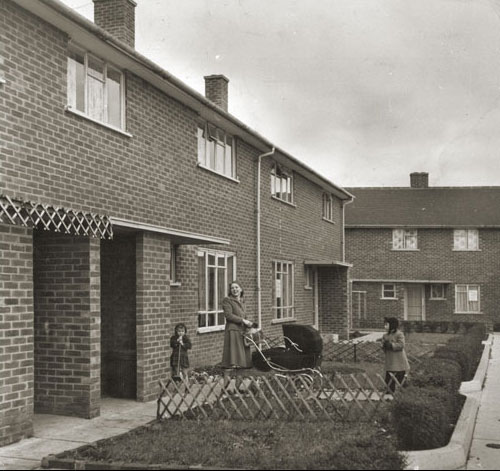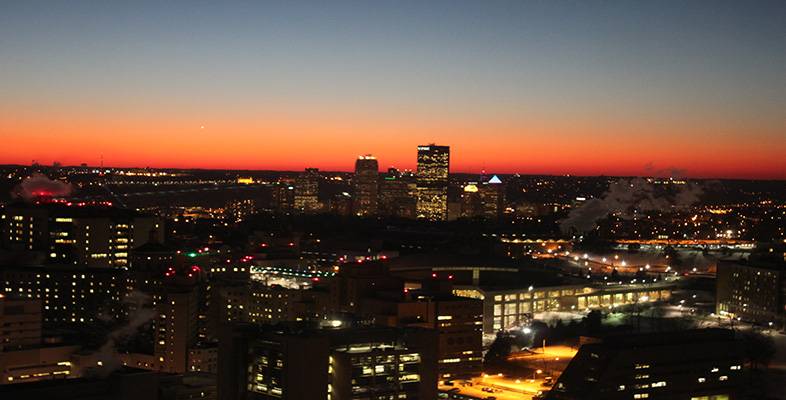3.3 Bringing it all back home: the ‘problem estate’
It would be mistaken to deduce from the discussion thus far that problem populations and problem places only occur elsewhere. The focus of this section is to consider how such understandings also emerge in the UK. Our case study here is formed around a specific type of place which in recent decades has increasingly come to be perceived as a ‘problem’ – the deprived council estate.
Activity 4
In Estates: An Intimate History (2007), Lynsey Hanley offers an autobiographical account of being raised in a suburban council estate in Birmingham in the 1960s and 1970s. Read the following short extract from Hanley's story and think about the following questions:
What do this tell us about how council estates might be perceived in the UK today?
What, if any, criticisms would you make of her claims?
Extract 7
The Wood. I was born there, and lived there between the ages of eighteen months and eighteen years. Even though I have lived away from home for over a third of my life now, it continues to shape the way I think about the world outside it. … [I]t's a lifelong state of mind.
…
It's not something you think about when you're growing up. Wow, I’m really alienated. My school is suffering from its single-class intake. … It's more a sense you have. A sense that someone, who lives in a proper house, in a proper town, sat on the floor of an office one day with a box of fancy Lego bricks and laid out … a way of housing as many people as possible in as small a space as could be got away with. And, in so doing, forgot that real people aren't inanimate yellow shapes with permanent smiles … That real people might get lost in such a place.
I wonder if the stigma of coming from a council estate is ever turned to an advantage, and whether that inherent sense of inferiority ever becomes a source of pride. You believe yourself to be proud of having overcome the limitations of your environment – literally, of having escaped a kind of prison – and yet you know that in some ways you will never escape. That's because, to anybody who doesn't live on one (and to some who do), the term ‘council estate’ means hell on earth.
Council estates are nothing to be scared of, unless you are frightened of inequality. They are a physical reminder that we live in a society that divides people up according to how much money they have to spend on shelter. My heart sags every time it senses the approach of those flat, numbing boxes that prickle the edges of every British town.
Hanley, 2007, pp. 4, 5

Discussion
Hanley provides a vivid description of what is often referred to as ‘council estate living’. The gloomy image that is offered, however, is not out of step with the dominant representations of estates that circulate today. Elsewhere in her book we are invited to play word association with the term ‘council estate’, and Hanley provides some assistance by listing ‘alcoholism, drug addiction, relentless petty stupidity, a kind of stir-craziness induced by chronic poverty and the human mind caged by the rigid bars of class’ (2007, p. 7). But we could go much further than this by adding youth offending, teenage pregnancies, unemployment, welfare and benefit ‘cultures’, violence and disorder. Hanley's account fits well with wider mainstream media representations of estates which use these locales and their populations in crime dramas and documentary programmes built around CCTV footage. In addition, there are the representations carried in the print and electronic media that speak of neighbours and estates ‘from hell’, that tell us which are Britain's ‘worst’ estates and towns, and which generally make strong connections between council estates and some of the worst forms of youth offending. For example, in Scotland a close association is made between ‘neds’ (generally interpreted as non-educated delinquents) and council estates (Fergusson and Muncie, 2008). Council estates have also featured as convenient backdrops of social disorganisation in popular fiction and journalism, in travelogues, and as a source of political commentary and policy debate. In the late 1990s and early 2000s, for instance, it was the council estate which was marked out by the New Labour Government as one of the key locales of ‘social exclusion’ in British society.
